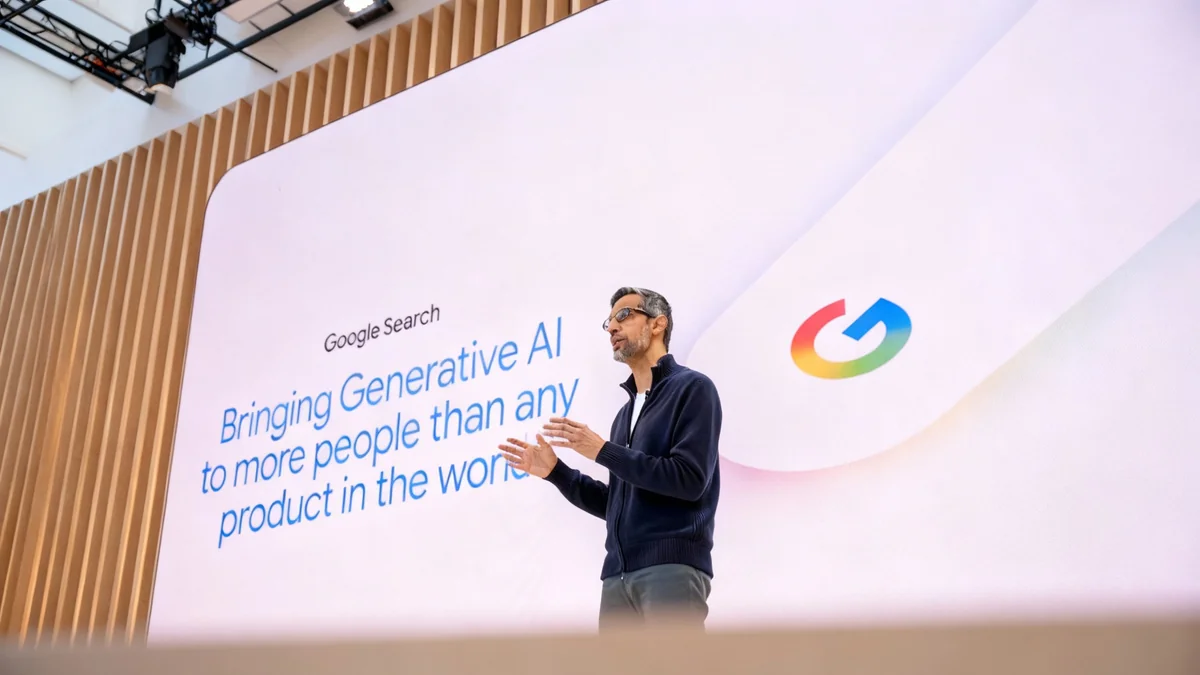Artificial intelligence company Perplexity has released a new Application Programming Interface (API) for developers. This tool provides access to the same core technology that powers its public search engine, allowing developers to integrate Perplexity's extensive web index into their own AI-driven applications.
The launch aims to equip developers with powerful, structured data to build more sophisticated AI tools, coming at a time when the company's valuation has surged to $20 billion following a recent $200 million funding round.
Key Takeaways
- Perplexity has introduced its Search API, giving developers access to its underlying search infrastructure.
- The API is designed to provide structured data from an index of hundreds of billions of webpages for use in AI applications.
- This release follows a $200 million funding round that valued Perplexity at $20 billion.
- The move aligns with a growing trend, especially among younger users, of preferring AI chatbots over traditional search engines.
Details of the New Search API
Perplexity announced the new Search API in a company blog post, describing it as a single interface for accessing its vast information index. The company stated that its index contains hundreds of billions of webpages, now accessible to external developers.
Unlike some other API offerings that may limit the scope of information, Perplexity emphasized that its tool is built specifically for the demands of modern AI systems. The company claims the API delivers rich, structured responses that are ready for immediate use in both AI and traditional software applications.
“Perplexity Search API is designed for the unique demands of AI applications,” the company stated in its announcement. “Our API provides rich structured responses that are ready for use in AI and traditional applications alike.”
To facilitate adoption, Perplexity is providing a suite of resources for developers. These tools include a Software Development Kit (SDK), an open-source evaluation framework to test performance, and detailed documentation on how the API was constructed.
Market Trends Driving AI Search
The release of the Perplexity Search API coincides with a significant shift in online search behavior. Recent data indicates a growing preference for AI chatbots over traditional search engines, a trend most pronounced among younger demographics.
User Adoption of AI
According to PYMNTS Intelligence, approximately two-thirds of Generation Z and zillennial consumers already utilize AI chatbots for both work-related and personal tasks. This highlights a generational move toward conversational interfaces for information retrieval.
This trend is not limited to younger users. Across all generations, more than 75% of individuals who use generative AI find the experience of interacting with it via a keyboard, touchscreen, or mobile device to be easy. This widespread ease of use suggests that AI-powered search is becoming mainstream.
By opening its infrastructure to developers, Perplexity is positioning itself as a foundational technology provider in this expanding market. The company is enabling others to build specialized AI tools that cater to this new user expectation for direct, conversational answers.
Perplexity's Rapid Financial Growth
Perplexity has experienced remarkable growth in its valuation over the past year, fueled by consistent investor interest. On September 10, it was reported that the company had secured $200 million in new funding, elevating its valuation to an estimated $20 billion.
This funding event is the latest in a series of rapid capital infusions. The company has reportedly raised funds approximately once every two months over the last year, bringing its total raised capital to over $1 billion.
Valuation Timeline
- March: Valued at $14 billion after a funding round.
- July: Valued at $18 billion after raising an additional $100 million.
- September: Valued at $20 billion after a $200 million investment.
This aggressive funding strategy and steep valuation climb reflect strong market confidence in Perplexity's technology and its potential to compete in the AI and search sectors.
Expanding Product Ecosystem
The new developer API is part of a broader strategy by Perplexity to expand its presence across multiple platforms. The company has been actively launching new consumer-facing products to embed its AI capabilities into daily user workflows.
The Comet Web Browser
On July 9, Perplexity introduced Comet, an AI-powered web browser. The browser is designed as a unified interface where users can ask questions, perform tasks, and conduct research without switching between applications.
A key feature of Comet is its built-in assistant, which can manage browsing sessions in the background. According to the company, this assistant can handle complex tasks such as comparing information from different sources, analyzing insurance plans, or assisting with investment decisions.
Mobile AI Assistant
Earlier in the year, in January, Perplexity integrated an AI assistant directly into its Android application. This feature was designed to help users with practical, everyday tasks directly from their mobile devices.
Examples of its capabilities include booking dinner reservations, identifying a forgotten song, calling a ride-sharing service, drafting emails, and setting reminders. This move demonstrated Perplexity's focus on making its AI technology a useful tool for on-the-go assistance, further challenging the traditional role of mobile search engines.





